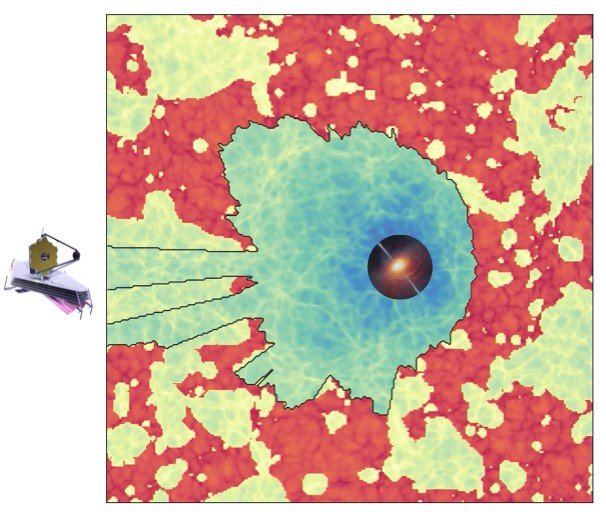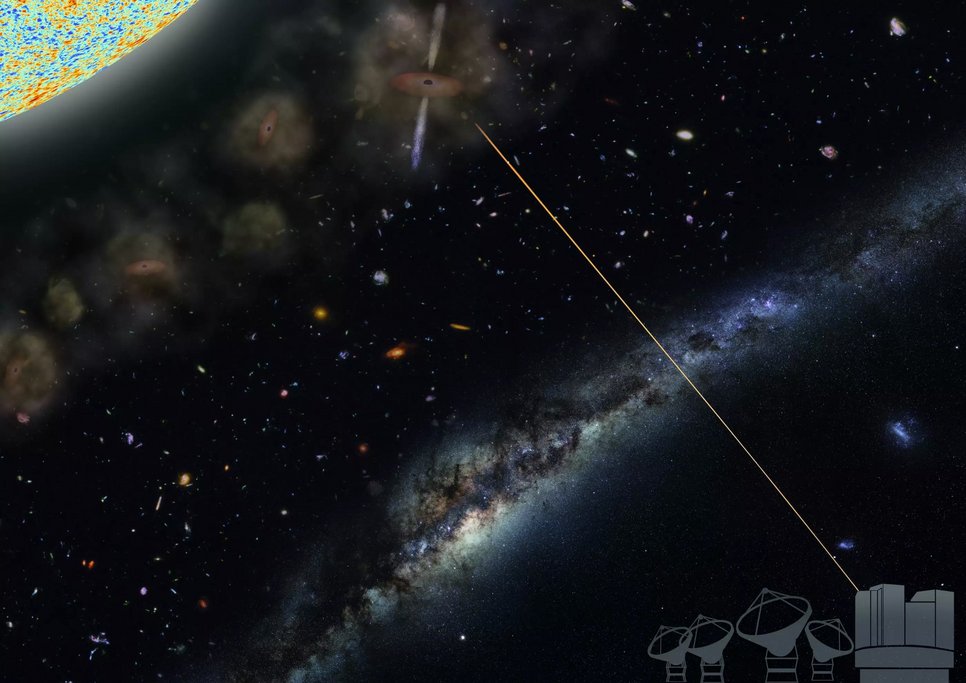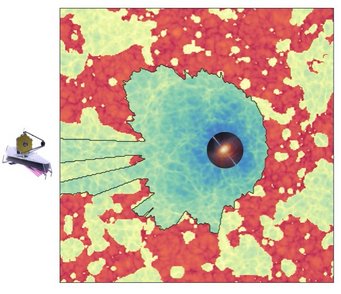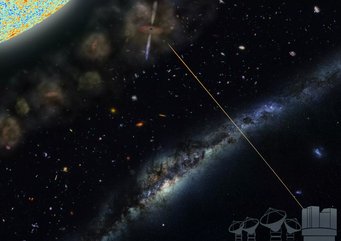Cosmology and the Epoch of Reionization

Less than a billion years after the Big Bang, the Universe underwent a cosmological phase transition known as the Epoch of Reionization. During this time, ultraviolet photons emitted by the first stars, galaxies, and growing black holes stripped the electrons from the primordial hydrogen atoms in the intergalactic medium (IGM), which remains an ionized plasma to this day. The Epoch of Reionization connects the early formation of structure to the largest cosmological scales, a formidable dynamic range problem for theoretical astrophysics, and requires sensitive observations of the most distant objects known. At MPIA, we are carrying out both theoretical and observational programs to understand/characterize the process of reionization and the formation of the first sources and structures in the Universe.
MPIA scientists are pursuing some of the key questions in the field:
When and how did the first stars, galaxies, and supermassive black holes form?
Which sources were primarily responsible for reionization?
When and how did reionization happen?
From a theoretical perspective, we develop numerical simulations to model and understand the formation of galaxies during the Epoch of Reionization. These models aim to go beyond our flagship IllustrisTNG project to include sophisticated physical treatments of the inter-stellar medium, star formation, stellar feedback, and stellar evolution/populations, all based on the code AREPO.
From an observational perspective, we specialize in the discovery and characterization of some of the most powerful and mysterious objects in the cosmos: quasars—supermassive black holes that are growing rapidly in the center of massive galaxies. These quasars can be studied in detail well within the Epoch of Reionization. However, one of the main challenges is to identify these distant quasars among billions of astronomical sources in the sky. At the moment there are more than 200 quasars known within the first billion years of the Universe (or redshifts z>~6) and only a handful of quasars known beyond z>7. MPIA has played a key role in a significant fraction of these discoveries. These are complex sources and to understand them MPIA astronomers’ study them from X-rays to radio wavelengths. Some of the main questions that MPIA scientists are trying to address are:
How do SMBHs grow and form? How do we explain the existence of quasars powered by black holes of more than billion solar masses less than 700 Myr after the Big Bang?
How do supermassive black holes shape their host galaxies? Are the feedback processes different in the early Universe? What came first, the stars or the supermassive black holes?

At MPIA we also use the most distant quasars and galaxies to infer the progression and topology of reionization through modeling and analysis of their foreground IGM. Neutral hydrogen in the IGM imprints a spectral absorption signature via the Lyman-alpha resonant line. Observations of this absorption towards high-redshift quasars, known as the Lyman-alpha forest, provide a sensitive test of the neutral hydrogen content in the IGM throughout cosmic time. By measuring the variations in the Lyman-alpha forest absorption between different regions of the Universe, the patchy, bubble-like topology of reionization-epoch neutral hydrogen can be measured. The correlation between these absorption differences and the locations of nearby galaxies can further reveal the number of ionizing photons they emit. Finally, a definitive “smoking gun” of the Epoch of Reionization is the detection of the so-called “damping wing” of the Lyman-alpha transition in quasar spectra. This damping wing feature can only be detected deep into the reionization epoch when the IGM is very neutral, further motivating the search for ever more distant quasars.
The future is bright. MPIA scientists are involved in the instrumentation and scientific exploitation for the next generation of space and ground-based telescopes such as JWST, Euclid, and E-ELT.

